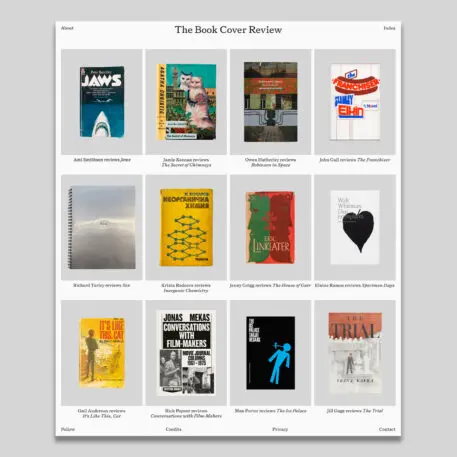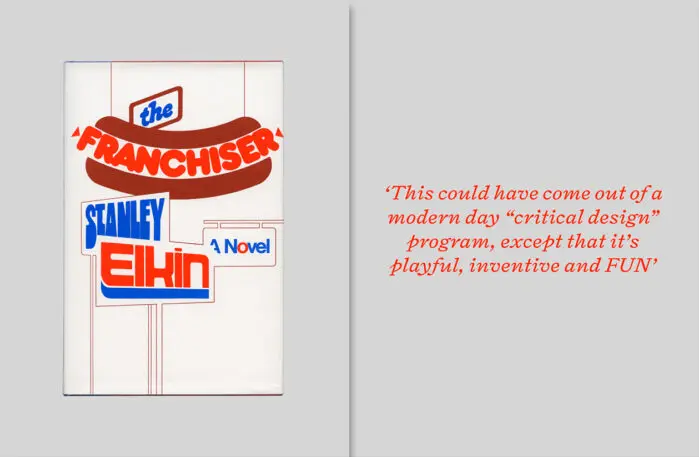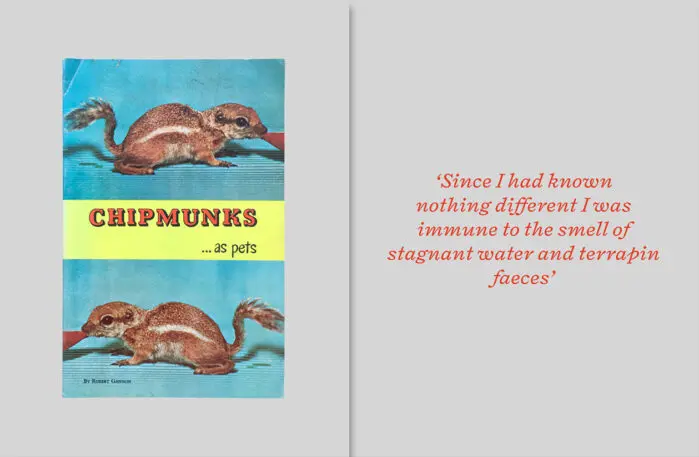During the height of the pandemic, as many of us hunkered down with a tower of unread books, David Pearson was doing something different: He was thinking intensely about their covers.
As one of the most striking and consistently surprising book cover designers working today, the subject is likely never far from his mind. But it was indeed the focus of a series of boozy video calls between Pearson and friends in quarantine.
“What came out of those Zoom meetings was a sense of frustration that books are increasingly viewed as props or as interior decor—especially with the way they are set-dressed for social media,” he says. “Any assessment of how they are designed has become so paper-thin as to be largely meaningless.”

Beyond niche design sites and click baity trend pieces, there’s not much in the way of book cover discourse. So Pearson decided to do something about it. He hammered out the idea with designer Jon Gray as Jack Smyth rallied the project along. The result: The Book Cover Review, a veritable New Yorker of the topic.

The site launched earlier this year, featuring 500-word reviews of classic and contemporary covers by a medley of voices in the design world. There’s Gail Anderson on It’s Like This, Cat (design by Emil Weiss). Elaine Ramos on Specimen Days (Thiago Lacaz). Rick Poynor on Conversations with Filmmakers (Fabian Bremer, Pascal Storz). John Gall on The Franchiser (Lawrence Ratzkin). Nina Stössinger on Invisible Man (Cardon Webb).

Reviewers are free to write about any book cover from any era—though Pearson notes that people have been less inclined to take on critiques of contemporary work, at the risk of offending a peer. “So far, it has been an even mix of friends and people I admire from afar,” Pearson details. “I guess I will carry on like this until I run out of friends and people I admire from afar.”

Pearson says he was curious about which covers linger in reader’s memories—and why. He wanted the site to give book designers examples they could point toward to aid in their own processes. And he wanted to provide a deeper interrogation of a book’s three-dimensional properties, a topic he believes is largely absent online (“I’m often left feeling like a JPEG is the most meaningful endpoint of the book design process”)—which in turn has bred a culture in publishing where no value is attached to production. He wanted to bring honesty, vulnerability, and complexity to the discussion. And, well, he wanted to make something fun.
As for the design of the site itself, Pearson roughed out a straightforward concept that gave equal billing to word and image, and Studio Bergini refined and brought it to life with the coding of Felix Steindl.

One of the most endearing aspects of The Book Cover Review is the low-fi approach to how the covers are presented. Each review is accompanied by a photograph, roughly cropped to showcase the reviewer’s own copy of the book, which adds an intimate, tangible human layer to each piece. That rough-around-the-edges visual can resuscitate a book cover from the lifeless, flawless JPEGs scattered around the internet. It’s a reminder of what can make book covers so gripping in the first place.
“They are an output of creativity in the service of someone else’s output of creativity,” Pearson says. . . . “They can be highly crafted and considered, attractive, intriguing, sensorial, and evocative windows into the world of words.”
The same could be said of The Book Cover Review.
Recognize your company's culture of innovation by applying to this year's Best Workplaces for Innovators Awards before the extended deadline, April 12.
